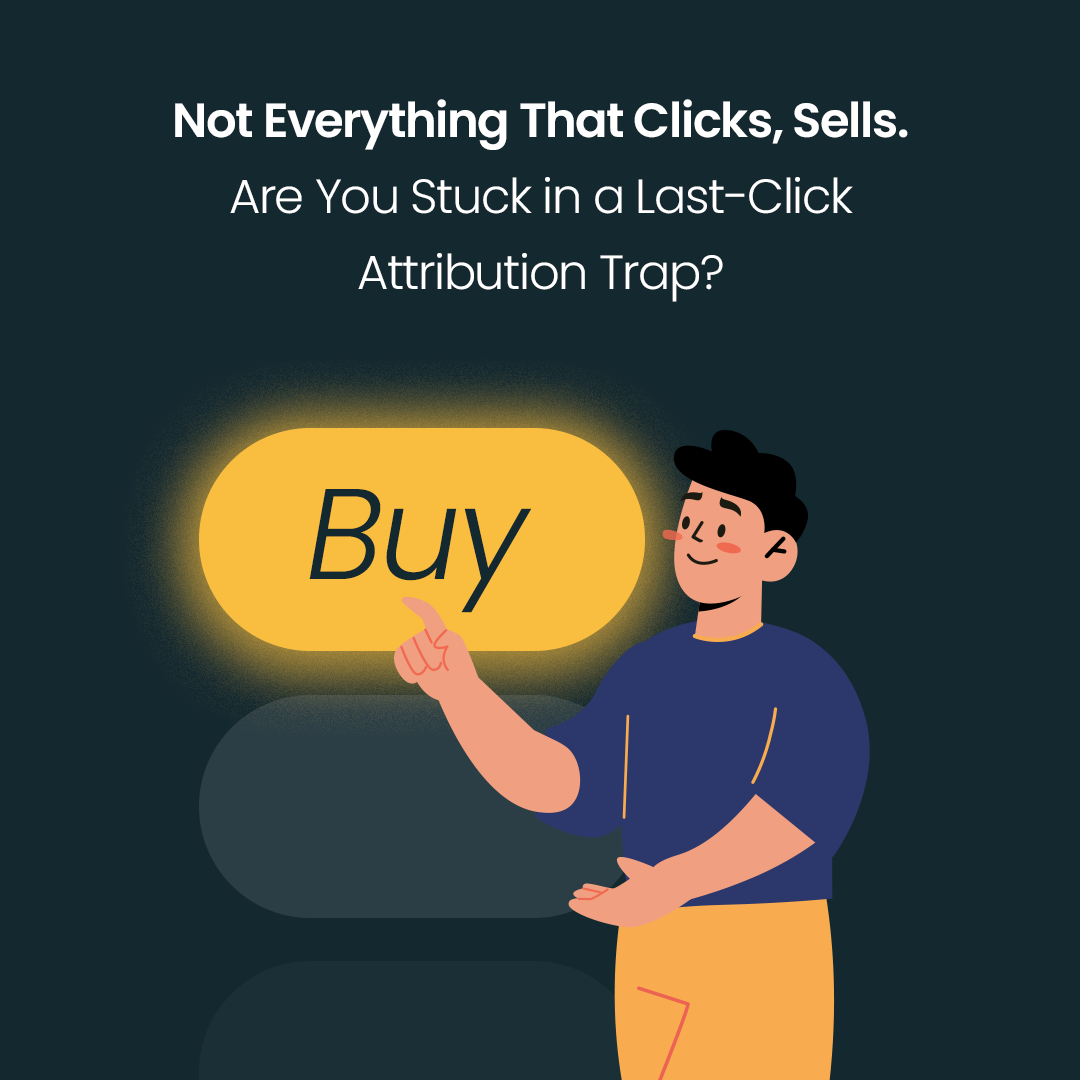In today's data-driven marketing world, proper measurement and campaign optimization are key. A siloed perspective on data, together with fragmented advertising and analytics activities, make it difficult to holistically look at the customer path, optimize campaigns, and measure success. This is where Google Marketing Platform (GMP) comes to the rescue.

What is Google Marketing Platform?
Imagine a central hub for all your marketing activities - this is what GMP is. It's a unique platform from Google that integrates a set of powerful tools, including:
Campaign Manager 360 (CM360): Activate, measure and control paid advertising campaigns in display, video, mobile, social, and search ads - all under one roof.
Display & Video 360 (DV360): Manage automated programmatic campaigns (display, video, audio, DOOH, CTV, and more) for maximum reach and efficiency.
Search Ads 360 (SA360): Manage multiple search engines and campaigns in one place, and automate daily campaign maintenance, for example, with Google Ads.
Google Analytics 360 (GA360): Get in-depth customer insights with advanced analytics and reporting features.
Tag Manager 360: Manage site and application tags from a single interface, eliminating the need for manual code editing.
Integrating all these tools (and many others, including those not part of Google) in one place - the GMP platform, makes the Google Marketing Platform a great choice for practically any organization. In addition, GMP provides not only centralization of your activities, but also access to advanced data collection and activation functionality, audience targeting, purchase of ad space, and analytics of purchased media, to name a few. Ready to harness the power of GMP in your business? Here's a step-by-step guide to help you get started with GMP!
Step I - identifying business needs
Let's start a proper GMP implementation with the basics - that is, answering the question of what the needs of your business are. So before we begin to delve into the capabilities of the GMP platform, it's a good idea to answer questions such as:
What marketing strategies are you implementing and planning to implement?
What goal do you want to achieve? Do you want to increase brand recognition, increase website traffic, and/or generate leads?
What are the most effective channels to reach your customers? Who is your target audience?
By aligning your GMP implementation with your broader marketing strategy, you will ensure the optimal use of the Google Marketing Platform in your organization.
Step II - audit of marketing and analytical tools
The next step (not mandatory, but certainly worth undertaking) will be an audit of the marketing and analytical tools that have been used so far. The audit should be conducted to check the capabilities of the tools currently in use against the business and marketing needs identified earlier. When conducting an audit, in case of a lack of resources on the part of your organization, it is recommended to use the assistance of Salestube experts who will conduct audits and prepare appropriate conclusions and recommendations. At the beginning of the audit, you should check what tools you are currently using to purchase media and analyze ongoing campaigns or user behavior. It will be especially important to identify the data and data sources you currently use (for example, user lists), or the methods used to optimize campaigns, reporting, and automation of daily tasks of an analyst or PPC specialist. Based on the conclusions of the audit, you will be able to identify the key limitations of the tools you have been using so far, as well as areas for GMP development in your organization.
Step III - discussions with a GMP Sales Partner and access to the platform
After the audit, you should discuss the results and the needs of your organization with a certified GMP Sales Partner, such as Salestube. This allows the Sales Partner to present you with the offer and features of specific GMP tools, and to compare GMP's capabilities to other solutions you use. This will give you a complete picture of the possibilities of using GMP in your organization and, with the aid of the selected Partner, you will be able to access the specific GMP tools and achieve your business goals.
Check out the graphic below to see what the GMP access process looks like when collaborating with Salestube - we offer GMP access in a matter of 3 business days maximum ;)
Step IV - GMP implementation and training plan for your team
Along with granting access to GMP accounts, it is a good idea to prepare a plan for the implementation and use of GMP tools in your organization. This is because it may turn out that in your company you may need, for example, the implementation of Search Ads 360 faster than Display & Video 360, or maybe it will turn out that implementing all of the GMP tools has the same priority. You should also remember to properly prepare your team to use the new tools - plan a set of training and onboarding together with your GMP provider so that the entry into GMP is as smooth as possible for your entire organization. As for the education in the field of GMP, we also recommend taking advantage of the free courses from Google on the Skillshop platform.
Step V - developing the account architecture and floodlight data collection structure in GMP
After you familiarize yourself with the platform and get access, you should make sure you have a good foundation (data) for the right actions in the next steps - to determine the optimal advertiser account structure for your business and plan what data you want to collect using GMP (floodlight code configuration). When planning the account structure and floodlight configuration, it is worth considering, in particular:
how will you want to report your results on a daily basis - per brand/country/product category/others?
how many teams/agencies are handling your individual brands/countries - and what data should they be able to view, what access do they need?
what data would you want to collect in GMP to then utilize as conversions/ micro conversions?
what is the structure of your Google Ads accounts - is it currently optimal for you? (this will affect, among other things, the ability to integrate Google Ads and DV360 audience lists).
Keep in mind that based on the floodlight codes in GMP you also create your own 1st party user lists, so the more such data you collect, the more opportunities you have to build such lists and reach your audience. You can take care of the technical configuration of floodlight codes in one of two GMP tools: Campaign Manager or Display & Video 360. Depending on whether you plan to use SA360 and track your non-GMP marketing activities in CM360, you should configure floodlight codes in Campaign Manager 360 or in Display & Video 360, respectively.
Step VI - integration of GMP tools with other technologies
When implementing floodlight codes, you should also consider integrating individual GMP tools with other Google systems (e.g. Firebase, Tag Manager, YouTube, Google Ads, Google Analytics 4) and optionally with external systems you use (e.g. CRM, advertiser DMP, 3rd party ad servers, etc.). This allows you to use the data collected in other systems or Google products (such as the user lists created there) directly in campaigns carried out in GMP and to track the results of these campaigns across the advertiser's external systems as well.
Step VII - activation of individual tools
After completing the above steps, you can now move on to the active use of individual GMP tools according to your plan from step IV above. Depending on the solutions you have chosen, you can start by planning and setting up your first campaigns in DV360, connecting search engine accounts with Search Ads 360, or configuring tracking codes with Campaign Manager 360 and implementing them in relevant sources outside the GMP environment, that you want to use to investigate the conversion path of your customers. Keep in mind the baby step method ;) Do not try to implement every GMP feature overnight. Start with a basic set of functionalities that meet your immediate marketing needs. As your team gains experience and comfort with the platform, you can gradually integrate additional features.
What's next? Remember to constantly keep an eye on the platform's capabilities (GMP is constantly evolving) and adjust your activities in GMP accordingly with the development of your business and the changing expectations. With proper implementation of the Google Marketing Platform, you will get a unified view of your marketing activities and even more opportunities to increase the effectiveness of your efforts in return.
Looking for more information about GMP?
Check out the free GMP Ebook from Salestube and schedule a free consultation with our experts -> contact hello@salestube.tech ;)






